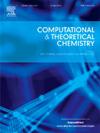The role of amylose and amylopectin in selective flocculation of iron ore slimes
IF 3
3区 化学
Q3 CHEMISTRY, PHYSICAL
引用次数: 0
Abstract
With the depletion of high-grade iron ore reserves, starch-based selective flocculation has proven to be an effective technique for processing ultrafine iron ore particles. Here, molecular modelling has been employed to examine the adsorption mechanism of starch polymer components, amylose and amylopectin, on hematite and goethite as well as gangue minerals of quartz and kaolinite. Through the DFT method, this research clarifies the contribution of amylose and amylopectin to the flocculation selectivity of starch by adsorbed polymer geometry as well as adsorption energies on the surfaces of each mineral. The obtained results illustrates that the amount of absorption energy of amylose on both hematite and gangue minerals is higher than that of amylopectin, and the amount of absorption energy obtained for both amylose and amylopectin in the case of hematite and goethite is significantly higher than that of quartz and kaolinite (Al-OH end). The results suggest that both amylopectin and amylose play the role in the selectivity of flocculants, which contrasts with earlier studies that attributed the selectivity of starch solely to amylose. The Fe![]() O chemical bond acts as the primary interaction mechanism linking the starch components with both hematite and goethite, while a considerably weaker hydrogen bond supports the interaction between kaolinite and amylose.
O chemical bond acts as the primary interaction mechanism linking the starch components with both hematite and goethite, while a considerably weaker hydrogen bond supports the interaction between kaolinite and amylose.

直链淀粉和支链淀粉在铁矿泥选择性絮凝中的作用
随着高品位铁矿储量的逐渐枯竭,淀粉基选择性絮凝技术已被证明是处理超细铁矿颗粒的有效技术。本文采用分子模拟方法研究了淀粉聚合物组分直链淀粉和支链淀粉在赤铁矿和针铁矿以及石英和高岭石等脉石矿物上的吸附机理。本研究通过DFT方法,通过吸附聚合物的几何形状以及每种矿物表面的吸附能,阐明了直链淀粉和支链淀粉对淀粉絮凝选择性的贡献。所得结果表明,直链淀粉对赤铁矿和脉石矿物的吸收能均高于支链淀粉,赤铁矿和针铁矿对直链淀粉和支链淀粉的吸收能均显著高于石英和高岭石(Al-OH端)。结果表明,支链淀粉和直链淀粉都在絮凝剂的选择性中起作用,这与先前将淀粉的选择性完全归因于直链淀粉的研究结果形成了对比。FeO化学键是连接淀粉组分与赤铁矿和针铁矿的主要相互作用机制,而一个相当弱的氢键支持高岭石和直链淀粉之间的相互作用。
本文章由计算机程序翻译,如有差异,请以英文原文为准。
求助全文
约1分钟内获得全文
求助全文
来源期刊

Computational and Theoretical Chemistry
CHEMISTRY, PHYSICAL-
CiteScore
4.20
自引率
10.70%
发文量
331
审稿时长
31 days
期刊介绍:
Computational and Theoretical Chemistry publishes high quality, original reports of significance in computational and theoretical chemistry including those that deal with problems of structure, properties, energetics, weak interactions, reaction mechanisms, catalysis, and reaction rates involving atoms, molecules, clusters, surfaces, and bulk matter.
 求助内容:
求助内容: 应助结果提醒方式:
应助结果提醒方式:


